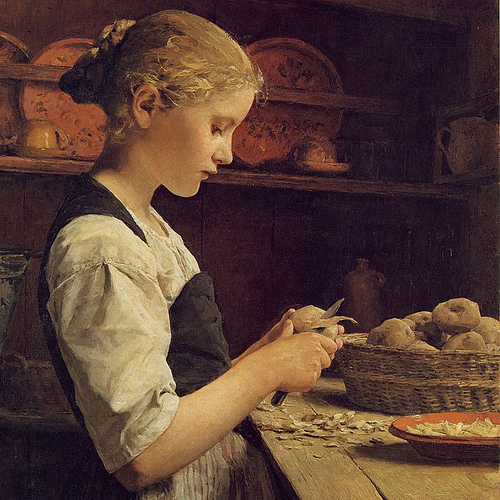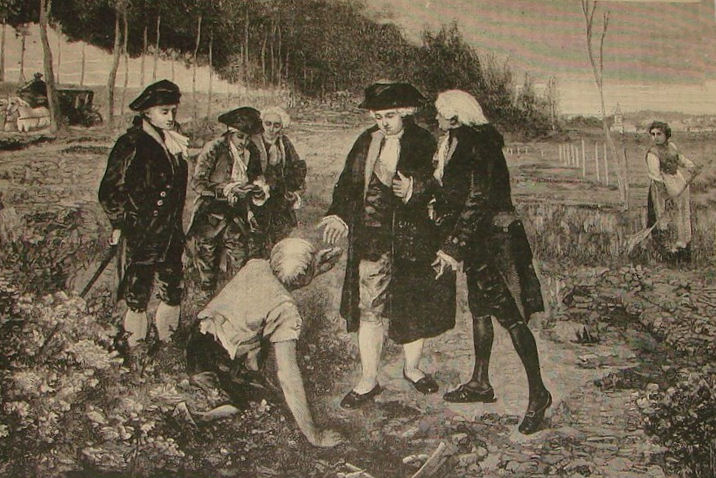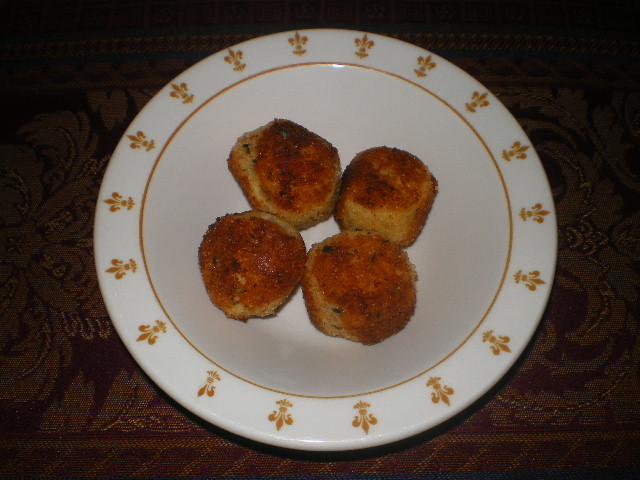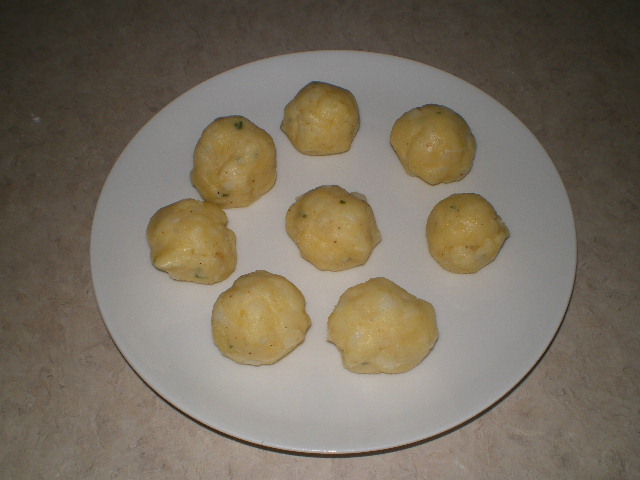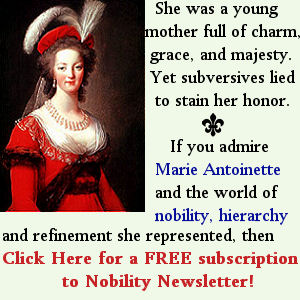As already noted in a previous post, the potato was one of the plants brought to the Old World after Christopher Columbus’s discovery of the Americas.
While the potato is used extensively throughout Europe today–German average potato consumption is 150 lbs per person per year–in its first years, the potato struggled for acceptance. In France, wheat and bread were the staples and the lowly potato was scorned.
Antoine-Augustin de Parmentier (1737-1813), an eminent physician who wanted to introduce the potato into the French diet, decided that the best way to break through the prejudice was to recruit the good offices of King Louis XVI and Queen Marie Antoinette. If they made the potato fashionable, the rest of society would follow suit; and follow they did.
Several stories are told. In one of them, Parmentier is said to have given the royal couple some potato flowers when they were walking in the gardens of Versailles. The Queen put some of the little flowers in her hair. The king put one in his buttonhole. The nobles and ladies in their retinue did the same and the incident became a topic of conversation throughout France.
Another story tells how the king gave Parmentier some acreage for the growing of potatoes. Walls were put up and a guard established to protect the garden. The air of mystery aroused people’s curiosity, which was doubled when guards accepted bribes to allow people to dig up potatoes. All of this staging encouraged people to look at the humble tuber from a new perspective.
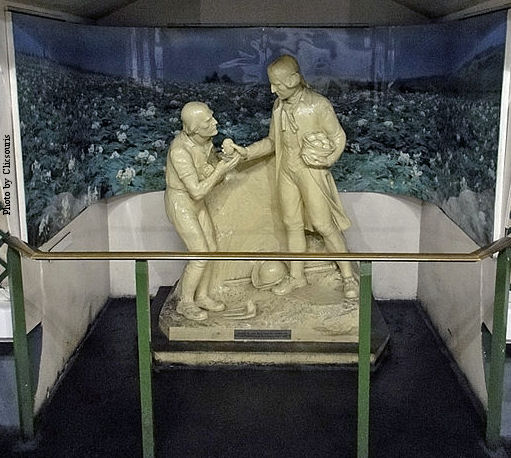
This statue of Antoine-Augustin Parmentier showing him distributing potatoes is located in the Parmentier Métro Line 3 Terminal in Paris. The Parmentier Métro opened in 1904 and was named after him.
All of these efforts received their reward and the potato was enshrined for good in French cuisine in 1785. In that year, famine struck northern France, but the poor were able to survive, thanks to the lowly potato. The death of many by starvation had been avoided.
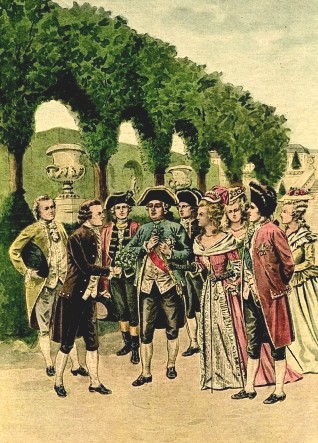
Parmentier offers a bunch of potato flowers to King Louis XVI and Marie Antoinette. Louis XVI put the flowers in his buttonhole and the whole Court followed his example.
Like Frederick the Great of Prussia and others, Louis XVI immediately grasped the potato’s potential as a basic food that could make all the difference when wheat crops were jeopardized by disease or bad weather.
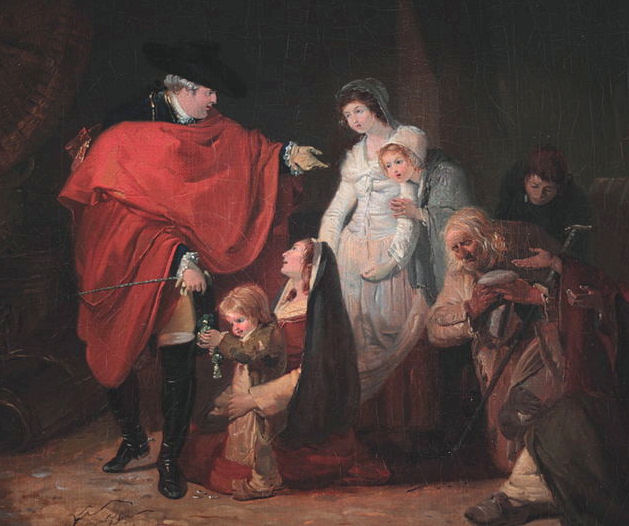
“The kindness of Louis XVI,” painted by Philibert-Louis Debucourt. In February 1784, near Versailles, Louis XVI visited a poor peasant family. Moved by their plight, he gave them the purse he had on him. His act of kindness became quickly known by all.
This insight, this grasping of the nature and potential of proposed remedies to social problems, and the promotion of these remedies to society at large is something that kings and nobles have down repeatedly down through the ages. It is an intrinsic part of the mission of the nobility to be always on the alert for ways to protect and advance the common good of society.
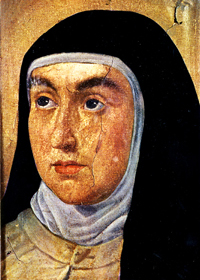
In Spain, the first potatoes were grown in the garden of a Seville Monastery by St. Teresa of Avila. Appreciating the potato’s health-improving qualities, she would give them to the sick.
Louis XVI’s Potato Croquettes
Recipe:
Serves 6
2 pounds of Potatoes
2 Tablespoons Butter
¼ teaspoon White Pepper
¼ teaspoon Nutmeg
½ Cup grated Parmesan
1 teaspoon of Parsley
½ to 1 teaspoon Salt
2 Eggs
Flour
Bread crumbs
Directions:
Peel the potatoes, cut them into four pieces, put potatoes in cold, salted water and then bring to boil.
Once potatoes are cooked, drain and smash them in the same pan with butter, over low heat.
When the purée seems compact and smooth, remove from heat and season with salt, white pepper, nutmeg, the grated cheese and then an egg yolk. Mix everything well.
When the mixture is cool to the touch, roll them into balls, creating the croquettes. Roll each ball first in flour, then a beaten egg and finally the bread crumbs.
Fry the croquettes in boiling oil, making sure to turn them often until they are evenly golden. Don’t deep fat fry them. Pan frying is best.
Serve warm with fresh parsley if desired.
This recipe is taken from the book “Tacuinum dè Eccellentissimi”, by Alex Revelli Sorini e Susanna Cutini ali&no publisher and this website: http://finedininglovers.com/recipes/side/potato-croquettes-recipe/ edited by Nobility.org
